Michael Heider
PDPK: A Framework to Synthesise Process Data and Corresponding Procedural Knowledge for Manufacturing
Aug 16, 2023

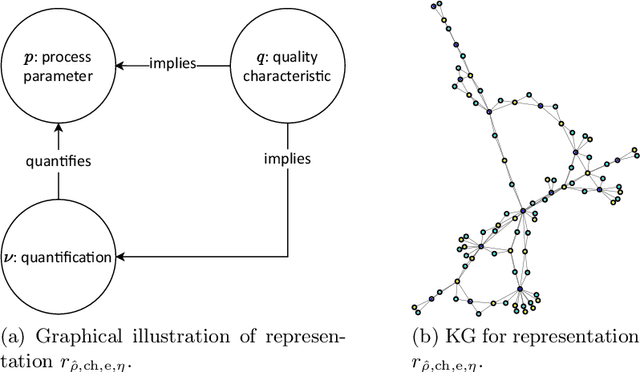
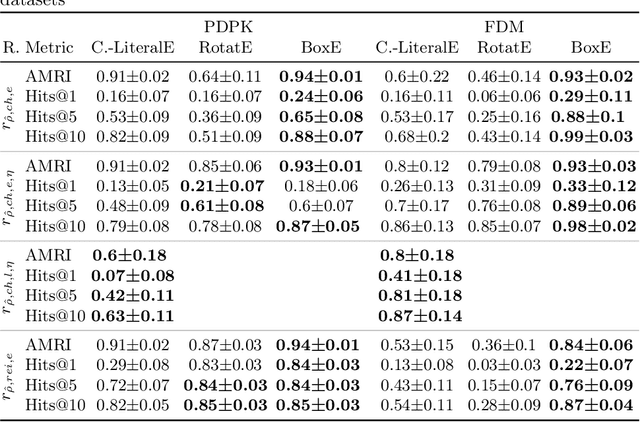
Abstract:Procedural knowledge describes how to accomplish tasks and mitigate problems. Such knowledge is commonly held by domain experts, e.g. operators in manufacturing who adjust parameters to achieve quality targets. To the best of our knowledge, no real-world datasets containing process data and corresponding procedural knowledge are publicly available, possibly due to corporate apprehensions regarding the loss of knowledge advances. Therefore, we provide a framework to generate synthetic datasets that can be adapted to different domains. The design choices are inspired by two real-world datasets of procedural knowledge we have access to. Apart from containing representations of procedural knowledge in Resource Description Framework (RDF)-compliant knowledge graphs, the framework simulates parametrisation processes and provides consistent process data. We compare established embedding methods on the resulting knowledge graphs, detailing which out-of-the-box methods have the potential to represent procedural knowledge. This provides a baseline which can be used to increase the comparability of future work. Furthermore, we validate the overall characteristics of a synthesised dataset by comparing the results to those achievable on a real-world dataset. The framework and evaluation code, as well as the dataset used in the evaluation, are available open source.
Investigating the Impact of Independent Rule Fitnesses in a Learning Classifier System
Jul 12, 2022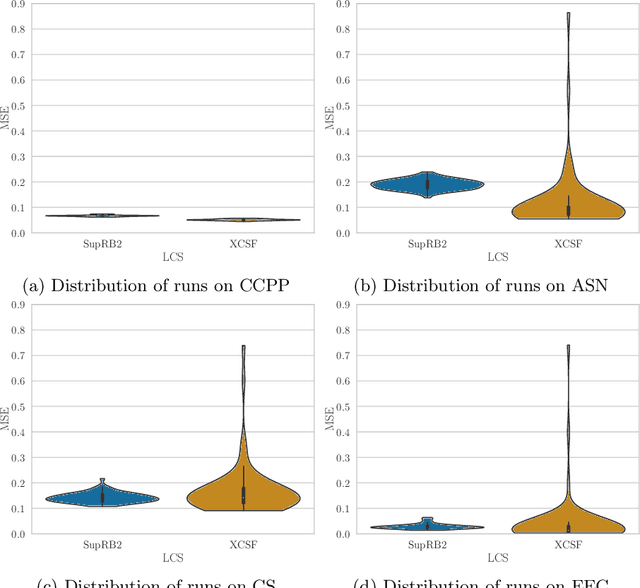
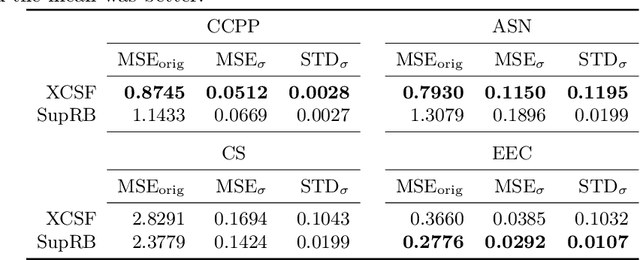

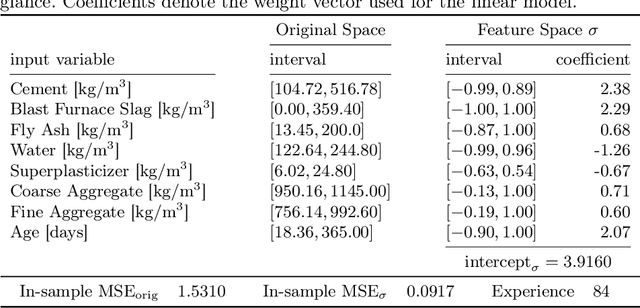
Abstract:Achieving at least some level of explainability requires complex analyses for many machine learning systems, such as common black-box models. We recently proposed a new rule-based learning system, SupRB, to construct compact, interpretable and transparent models by utilizing separate optimizers for the model selection tasks concerning rule discovery and rule set composition.This allows users to specifically tailor their model structure to fulfil use-case specific explainability requirements. From an optimization perspective, this allows us to define clearer goals and we find that -- in contrast to many state of the art systems -- this allows us to keep rule fitnesses independent. In this paper we investigate this system's performance thoroughly on a set of regression problems and compare it against XCSF, a prominent rule-based learning system. We find the overall results of SupRB's evaluation comparable to XCSF's while allowing easier control of model structure and showing a substantially smaller sensitivity to random seeds and data splits. This increased control can aid in subsequently providing explanations for both training and final structure of the model.
Learning Classifier Systems for Self-Explaining Socio-Technical-Systems
Jul 01, 2022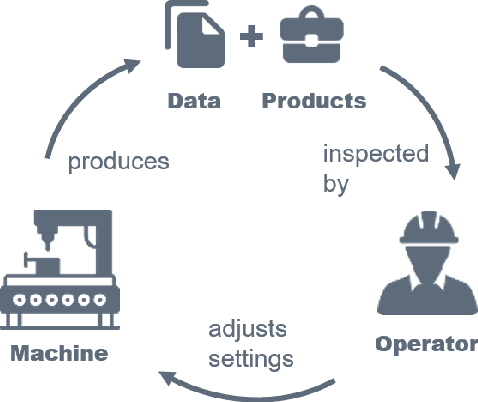
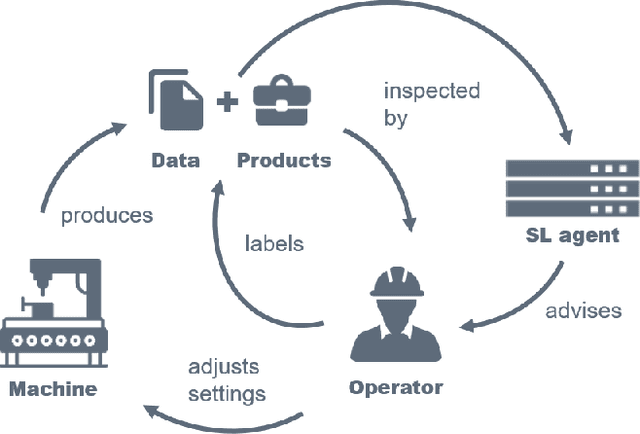
Abstract:In socio-technical settings, operators are increasingly assisted by decision support systems. By employing these, important properties of socio-technical systems such as self-adaptation and self-optimization are expected to improve further. To be accepted by and engage efficiently with operators, decision support systems need to be able to provide explanations regarding the reasoning behind specific decisions. In this paper, we propose the usage of Learning Classifier Systems, a family of rule-based machine learning methods, to facilitate transparent decision making and highlight some techniques to improve that. We then present a template of seven questions to assess application-specific explainability needs and demonstrate their usage in an interview-based case study for a manufacturing scenario. We find that the answers received did yield useful insights for a well-designed LCS model and requirements to have stakeholders actively engage with an intelligent agent.
Separating Rule Discovery and Global Solution Composition in a Learning Classifier System
Feb 03, 2022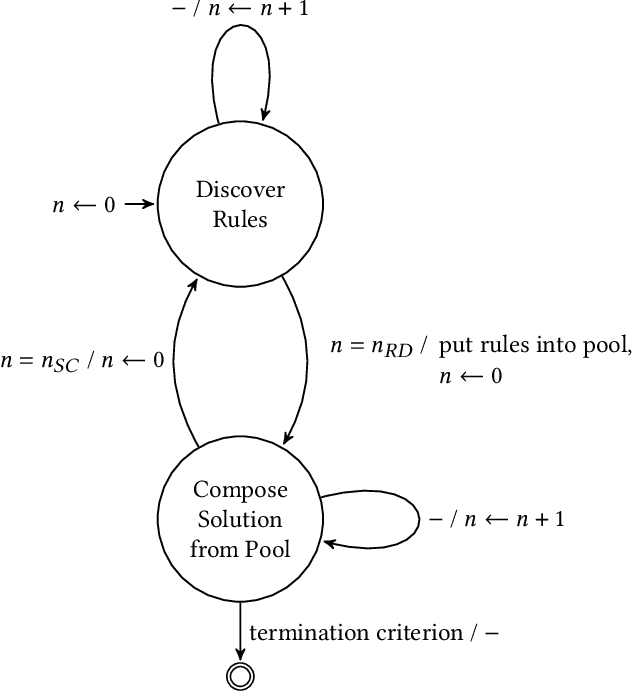

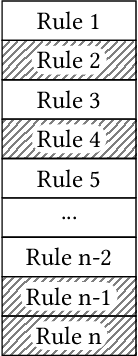

Abstract:The utilization of digital agents to support crucial decision making is increasing in many industrial scenarios. However, trust in suggestions made by these agents is hard to achieve, though essential for profiting from their application, resulting in a need for explanations for both the decision making process as well as the model itself. For many systems, such as common deep learning black-box models, achieving at least some explainability requires complex post-processing, while other systems profit from being, to a reasonable extent, inherently interpretable. In this paper we propose an easily interpretable rule-based learning system specifically designed and thus especially suited for these scenarios and compare it on a set of regression problems against XCSF, a prominent rule-based learning system with a long research history. One key advantage of our system is that the rules' conditions and which rules compose a solution to the problem are evolved separately. We utilise independent rule fitnesses which allows users to specifically tailor their model structure to fit the given requirements for explainability. We find that the results of SupRB2's evaluation are comparable to XCSF's while allowing easier control of model structure and showing a substantially smaller sensitivity to random seeds and data splits. This increased control aids in subsequently providing explanations for both the training and the final structure of the model.
SupRB: A Supervised Rule-based Learning System for Continuous Problems
Feb 24, 2020

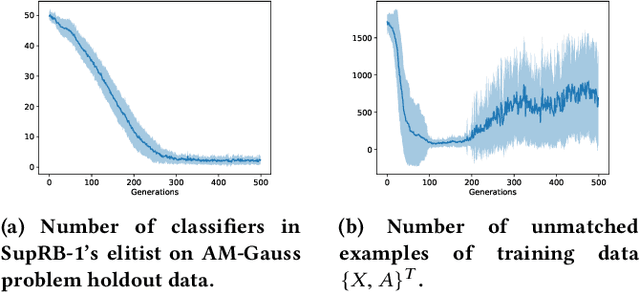
Abstract:We propose the SupRB learning system, a new Pittsburgh-style learning classifier system (LCS) for supervised learning on multi-dimensional continuous decision problems. SupRB learns an approximation of a quality function from examples (consisting of situations, choices and associated qualities) and is then able to make an optimal choice as well as predict the quality of a choice in a given situation. One area of application for SupRB is parametrization of industrial machinery. In this field, acceptance of the recommendations of machine learning systems is highly reliant on operators' trust. While an essential and much-researched ingredient for that trust is prediction quality, it seems that this alone is not enough. At least as important is a human-understandable explanation of the reasoning behind a recommendation. While many state-of-the-art methods such as artificial neural networks fall short of this, LCSs such as SupRB provide human-readable rules that can be understood very easily. The prevalent LCSs are not directly applicable to this problem as they lack support for continuous choices. This paper lays the foundations for SupRB and shows its general applicability on a simplified model of an additive manufacturing problem.
 Add to Chrome
Add to Chrome Add to Firefox
Add to Firefox Add to Edge
Add to Edge